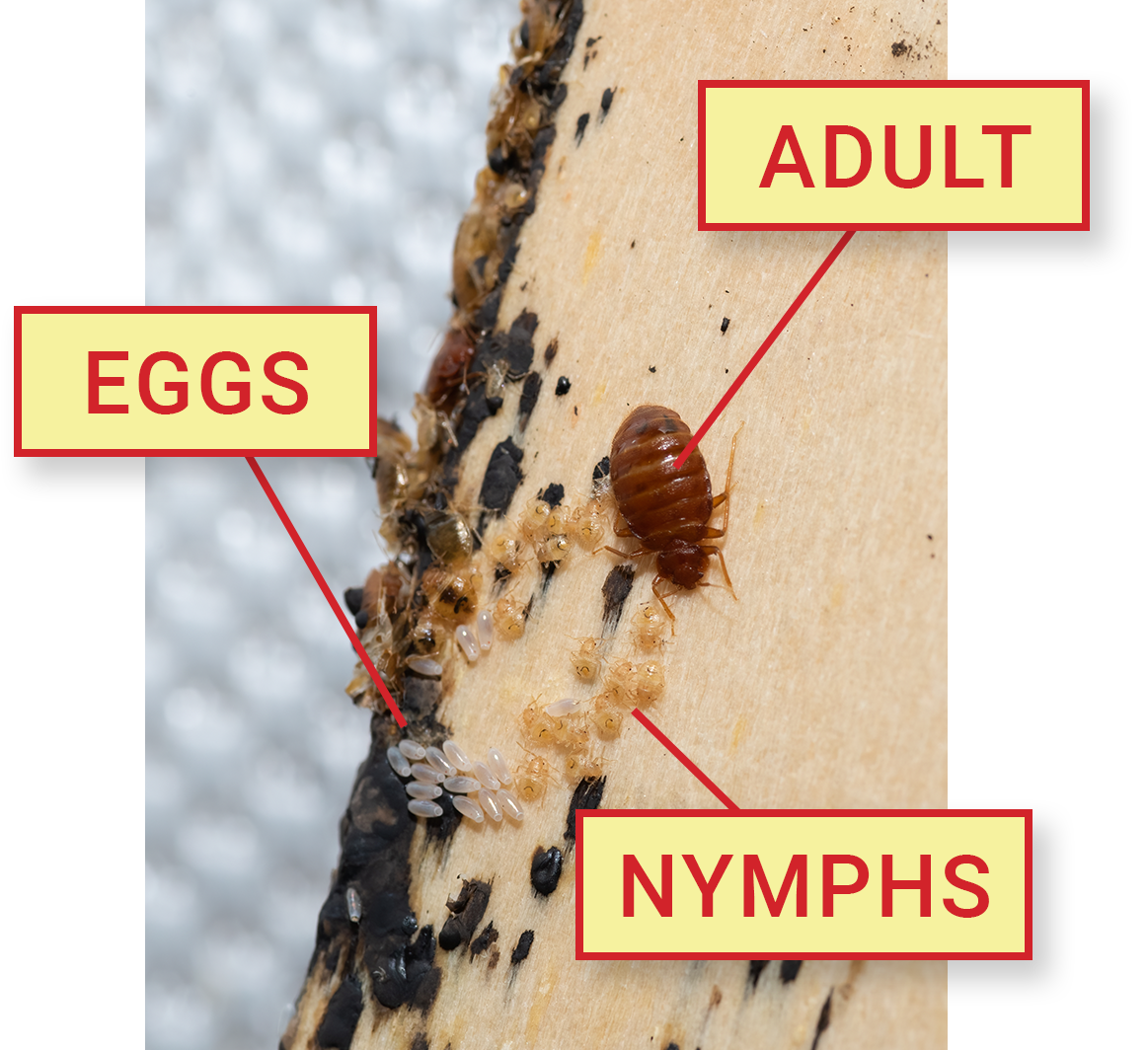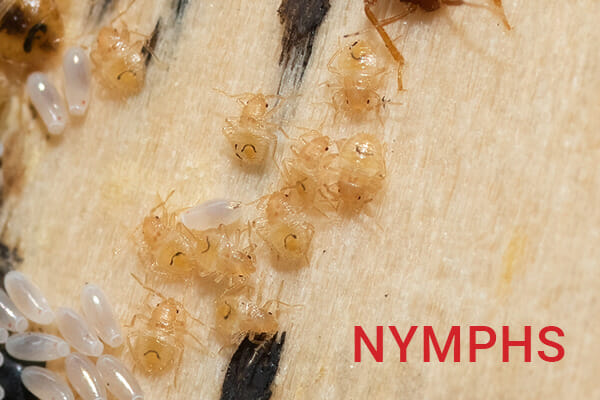Among the most unnerving pests that can be found in the home, bed bugs are flat, oval, reddish-brown/mahogany-colored insects that feed on blood from humans and other warm-blooded animals. They are usually nocturnal pests, feeding when their hosts are asleep, and are excellent at hiding in tiny or narrow spaces, such as in wall/floor cracks, in beds, under carpets and inside upholstered furniture. They grow from eggs to nymphs to adults and molt several times along the way.






